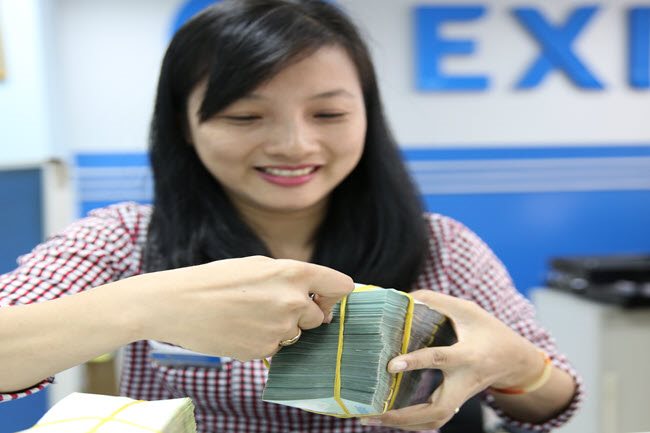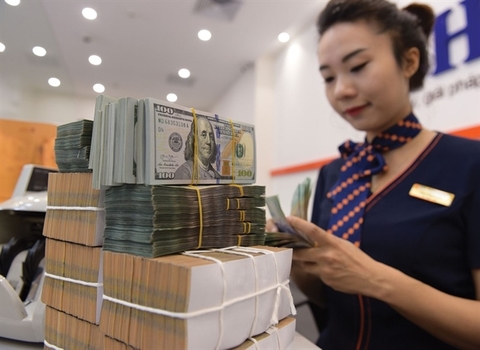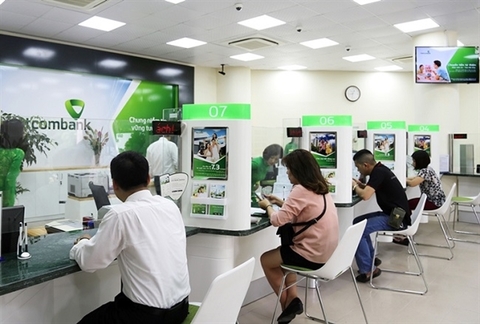Peacetime in sight for the dong
Peacetime in sight for the dong
The dong remained fairly stable against the U.S. dollar in 2019, contrary to the forecast that it would shed its value by 2-3%. That strength of the dong was ascribable to the economy’s stiffened resistance, and is expected to extend to 2020. Yet fluctuations in the world economy, if any, may still exert a negative impact on the local currency.

While the final days of 2018 were ticking away, the exchange rate was forecast to further increase within a range of 2% in 2019. However, this scenario did not play out. The exchange rate between the dong and the U.S. dollar last year was not only stable but also slightly lower than in late 2018.
In the early months of 2019, the dong was under pressure, which might lead to its depreciation. At that time, the U.S. Federal Reserve (Fed) was expected to hike interest rates three or four more times (as it did so in 2018), pushing up the 10-year U.S. government bond yield to over 3% in the process, thereby luring investment capital from emerging economies, including Vietnam, back to the U.S. market.
Furthermore, the risk of the yuan losing its value under the impact of the U.S.-China trade war mounted even heavier pressure on the exchange rate.
“The pressure that might depreciate the dong in Q1 and the first half of Q2 was quite high,” said Le Quang Trung, deputy general director and head of the treasury and capital division at VIB Bank. However, he said, things changed in Q2 and Q3. Instead of lifting interest rates the Fed did the opposite, bringing them down to promote economic growth, and thus the flow of foreign direct investment (FDI) returned to Vietnam, a country said to benefit from the trade war between the U.S. and China.
Subsequently, the U.S. dollar-dong exchange rate, according to Trung, became apparent when the relationship between the U.S. dollar and the yuan and that between the U.S. dollar and the dong changed: in lieu of depending on the evolution of the yuan, the dong managed to retain its stability although the yuan had sunk to its lowest level in more than a decade.
Vietnam’s foreign exchange market in 2019, as noted by Hoang Nu Ngoc Thuy, who is in charge of market analysis at the Bank for Investment and Development of Vietnam (BIDV), witnessed quite stable and positive developments, with the dong unwavering amid the fluctuations of other currencies in the region.
“The exchange rate between the U.S. dollar and the dong moved within a narrow range, at VND23,175-23,430, and if compared to the end of 2018, the dong slightly picked up some 0.1% against the greenback. This was the most peaceful year of the U.S. dollar-dong exchange rate during the 2015-2019 period and was the second year in which the local currency appreciated against the U.S. dollar (after 2017),” said Thuy.
The 0.1% change in the U.S. dollar-dong exchange rate is much lower than that of the exchange rates of couples of other currencies—such as the U.S dollar and the yuan (up 1.9%), the U.S dollar and the won (up 4.4%), the U.S. dollar and the baht (down 6.7%), or the U.S dollar and the rupiah (down 2.75%).
“The dong remained one of the most stable currencies in the region despite geopolitical uncertainties and economic events at home and abroad,” said Ngo Dang Khoa, country director of foreign exchange and capital market at HSBC Vietnam. “The exchange rate between the U.S dollar and the dong stayed almost unchanged throughout most of 2019, and the dong even appreciated against the greenback when the State Bank of Vietnam (SBV) took the initiative to lower the buying price in late November.”
The stability of the foreign exchange market in 2019, according to Thuy, is attributed to various factors, including the positive results of economic restructuring that helped strengthen the macroeconomic foundation and internal force, further improving the business environment.
Vietnam, as a result, became a highlight, which drew attention from the international community and investors in the rather bleak context of the global economy overshadowed by the Sino-U.S. trade war. This soon led to developments that were favorable for the balance of foreign currency supply and demand from the basic activities in the economy, such as a trade surplus amounting to US$9.9 billion, remittances estimated at US$16.7 billion, and foreign investment disbursement set at US$20 billion and indirect investment at over US$4 billion.
The central bank therefore bought US$20 billion to replenish the national foreign exchange reserves, expanding it to US$79 billion, according to SBV Governor Le Minh Hung.
In addition, inflationary pressures were under control, resulting in the average growth in the whole year of 2019 at only 2.79%, much lower than the target of “lower than 4%” set by the central bank when 2019 began.
Together, all the aforesaid factors contributed to reinforcing the value of the dong.
In 2019, the SBV used monetary market management tools in a proactive manner. Subsequently, policy rates were cut, interest rates brought down via bills or open market operations, buying rates lower and the central exchange rate gradually adjusted in accordance with market demand.
Forecasts for 2020
Twenty-twenty comes with the exchange rate between the dong and the U.S. dollar based on a relatively solid foundation. However, both internal and external risks should be taken into account to keep adverse effects at bay.
Thuy said against the background of the global and domestic macro-economy, the overall balance of payments may remain a surplus, or in other words, foreign currency supply is still greater than demand. In particular, the element deemed to play the most important role would be foreign investment. The dynamic and healthy development of Vietnam’s economy with such driving forces as the openness of the economy, the population structure, and the process of restructuring and urbanization will continue to lure capital flows from abroad to Vietnam in various forms—from remittances to direct and indirect investment.
“Therefore, it will come as no surprise if the exchange rate between the greenback and the dong has another stable year with quite modest fluctuations, around 1%.”
Sharing the same view, Trung predicted that the exchange rate fluctuations in 2020 would be in the range of 0-1%. “The value of the dong will remain stable in 2020. And in the worst-case scenario (for example, in case the yuan fell too sharply), the dong may depreciate by 1%.”
“The stability of the U.S. dollar-dong exchange rate is certainly an important factor which helps maintain the overall stability of the macro-economy, and enables the central bank to pursue its goal of easing the monetary policy and support business activities,” said Thuy.
However, she exercised caution in the exchange rate in 2020 as, she said, Vietnam is still on the currency manipulation watch list of the U.S., along with the practice of faking the origin of Vietnamese goods bound stateside.
So far, some Vietnamese products like steel have been slapped a high duty rate by the U.S. authorities. If others ended up in the same situation, export activities would certainly face sheer difficulties.
Another factor is a global economic downturn. Although the U.S. and China are making progress with the “Phase 1 agreement” in an attempt to cool down their trade war, uncertainty and unpredictability remain considerable (given the developments of the trade war, Brexit, corporate debts in China, the Korean peninsula, the Middle East, etc.).
Many international financial institutions have taken the view that the global economy is likely to fall into recession in one or two years. If this forecast comes true in economic powers like the U.S., China and the EU, it will be a real shock for Vietnam’s export or foreign investment activities.
According to Khoa, Vietnam should be aware of slower growth in regional economies as well as her key trading partners such as China, the U.S. and the EU. As these markets account for half of Vietnam’s total export volume, export will receive a hard blow when demand plunges, thus affecting the overall growth of the country.
Regarding inflation, despite the achievements throughout 2019, CPI displayed signs of rapid increase late last year due to the surge in food prices under the impact of the African swine fever outbreak. This is is another factor which should be adequately dealt with this year.
“The demand for Vietnamese goods in 2020 may also be affected by the decline in global demand,” said Khoa. “If so, export revenue will not be as positive. The exchange rate remains an unpredictable variable in the context of constant changes in the global geopolitical situation.”



















